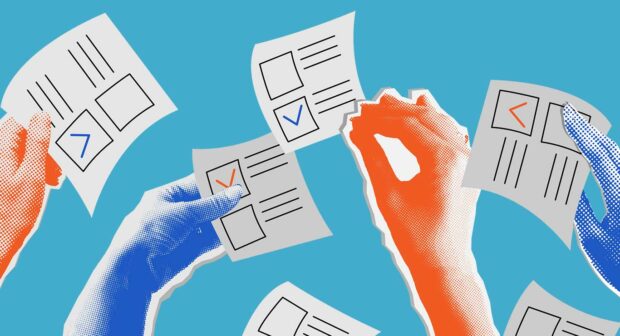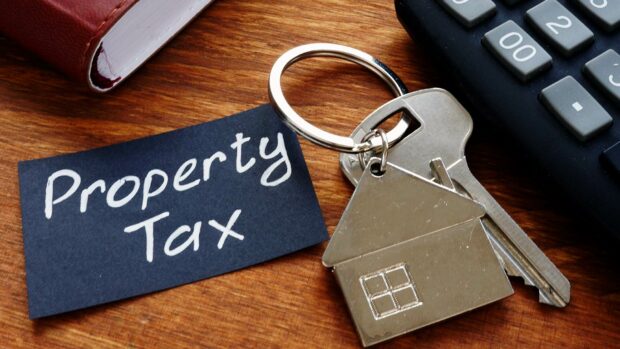
When purchasing a home, you have the option to get either a fixed-rate or adjustable-rate mortgage. Your income, your plans for the future, and how long you plan on taking to pay off your mortgage all affect which type is best for you. Here, we explain adjustable-rate mortgages, their pros and cons, and who they’re best for.
Table of Contents
What is an ARM?
ARM stands for adjustable-rate mortgage. Depending on the type of ARM you get, you will get a fixed interest rate on your mortgage for the first three to seven years. After that, the interest rate will fluctuate according to market rates.
When rates are low, this can be very good. But when the markets aren’t favorable and the rates are high, your payments will rise to reflect that.
A fixed-rate mortgage, on the other hand, has the same interest rate for the entire life of the loan. Some people prefer this kind of stability. However, some will benefit from the structure of an ARM. It all depends on your specific financial situation and your goals.
Pros & cons of adjustable-rate mortgages (ARMs)
That initial low rate could offer significant savings. As of June 2022, the average starting rate on ARMs was a full percentage point lower than on conventional loans, 4.04% vs. 5.09%. That’s s difference of more than a 20% in mortgage costs!
However, adjustable-rate mortgages got a bad reputation after the 2008 crash when huge, overnight increases in some ARMs led to foreclosures. But ARMs have been reformed since then, and have more reasonable, transparent terms, making them a safer choice for homebuyers.
Benefits of an adjustable-rate mortgage
Built-in safeguards
Most ARMs now have limits on how much your rate or your payment can increase at one time, as well as limits on how much the rate can increase throughout the mortgage. These caps protect you from the sudden, astronomical increases that led to foreclosures in the wake of the 2008 financial crash when many ARMs were essentially open-ended.
Low upfront payment
Because you get such a low rate in the initial low rate period, your payments during this time will be extremely affordable compared to a conventional mortgage. And because this rate’s locked in for a specific period, you can plan around it in the long term.
Adaptability
The ARM works well if your lifestyle is in flux. Say you’re in the early stages of your career and you can reasonably anticipate a big income bump in the next few years. In this instance, an ARM might be perfect for you. It’s affordable in the short term, and then when the rate increases, your income will be able to accommodate the larger payments.
Your payments won’t necessarily go up, they could decrease
Many people fixate on the risks of the ARM and assume your rate (and payments) will go up. However, if interest rates fall, your ARM would follow suit, granting you lower payments. While this isn’t all that likely today, with interest rates heading up to combat inflation, it’s always a possibility!
Potential drawbacks of an adjustable-rate mortgage
Your payments could go up
If interest rates go up during your fixed-rate period, your payments will increase when you enter your adjustable-rate period. If you’re looking at an ARM in 2022, this will likely be the case, since the Federal Reserve has been open about raising interest rates to combat inflation.
They are complicated
Like most financial products, ARMs have complex terms. Figuring out what can trigger a higher rate, and how much your rate will increase is a lot more complicated than calculating other costs associated with buying a home.
If you’re considering an ARM, do your research by getting expert opinions and talking in detail to your lender. If you fail to read and understand the fine print, you might find yourself paying a lot more than you bargained for, a lot sooner than you bargained for. Always read the fine print, and ask your lender for clarification where it’s needed!
The market fluctuates
Many people who opt for ARMs plan to pay the lower rate during the initial period, and then sell before the rate goes up. The problem is that demand in their market could dry up, and they might find it very difficult to offload the property before their higher payments kick in. In times of market fluctuation, it can be hard just to accurately estimate property value, so sales are tough. Remember, there’s always some risk inherent in investing!
Compare rates before you Purchase or Refinance.
ARM vocabulary
Adjustment frequency
This term describes how often your interest rate is adjusted after your initial fixed-rate period is over. Usually, rates adjust yearly.
Adjustment indexes
Lenders use an adjustment index to determine how much your new interest rate will be.
Interest rates are tied to a specific index, such as LIBOR (London Interbank Offer Rate) or Cost of Funds Index.
Margin
This is the percentage above the adjustment index that you agree to pay.
Rate caps
During an adjustment period, your interest rate can only increase by a certain amount. This is called the cap. If the difference between the market rate and your current rate is higher than the cap, then your rate will only rise to the cap.
There are two different types of interest rate caps. One lasts for the life of the loan and one limits the amount your rate can increase within one adjustment period.
Rate ceiling
The highest an adjustable rate can get over the life of the loan. Even if the market rate is higher, the rate on your loan can’t go past this percentage.
Requirements
Loan amount
Most ARMs require the homeowner to only borrow a certain amount. The typical limit is $510,400.
Credit history
The higher your credit score, the lower your interest rates will be. If you have a low credit score, the fixed rate you have in a hybrid ARM may be higher than in a fixed-rate mortgage.
Down payment
For an ARM, you can make a down payment as low as 5%, but you’ll want to do at least 20% if you want to avoid paying PMI (private mortgage insurance).
Types of ARMs

There are a few different types of adjustable-rate mortgages. The first is a 1-year ARM, which is the simplest. Its interest rate adjusts annually. There are also 3-year ARMs, which adjust every three years and 5-year ARMs, where the rate adjusts every five years.
Hybrid ARMs
Next up are hybrid ARMs, which are the most popular. Their names all have a similar structure, starting with a number over one. The first number tells you how long the loan will have a fixed rate before switching to an adjustable rate. The one denotes that the rate will adjust annually.
- 3/1 ARM: A hybrid adjustable-rate mortgage with a fixed rate for the first three years. Then the interest rate adjusts annually.
- 5/1 ARM 7/1 ARM: A hybrid adjustable-rate mortgage with a fixed rate for the first five years. Then the interest rate adjusts annually.
- 10/1 ARM: A hybrid adjustable-rate mortgage with a fixed rate for the first ten years. Then the interest rate adjusts annually.
There are also hybrid ARMs for 2/28 and 3/37. These loans have a fixed rate for 2 and three years respectively, then the rates adjust for the remaining 28 or 27 years. Rate adjustments can happen every six months with these types of ARMs.
Option ARMs
Also called a payment-option ARM, an option ARM gives you a few different ways to pay. Some of those options won’t cover the full amount of the mortgage loan, so plan wisely.
You can:
- Pay down your principal and your interest. This is the only choice that will help you pay down what you owe.
- Pay only toward your interest. This will help you get rid of some interest charges, but won’t pay down your loan.
- Pay an amount that doesn’t even cover your interest. This will actually increase what you owe.
Usually, every monthly mortgage payment covers part of the interest and part of the principal because that’s the only way to actually reduce what you owe. The option ARM allows you to make smaller payments, but at the expense of paying down less of your principal – or adding to what you owe.
VA and FHA ARMs
Service Members and Veterans can work with the VA to get an adjustable-rate mortgage. VA loans can often be secured with zero down payment.
An ARM from the Federal Housing Administration (FHA) is backed by the government. Keep in mind that FHA loans always have PMI, regardless of how much you put down as a down payment.
Is an adjustable-rate mortgage right for you?
Buying a house is getting more expensive. Year-over-year, home prices have surged over 20% according to Zillow, and interest rates on 30-year fixed-rate mortgages are now over 5%, up from below 3% a year ago. This has left home buyers scrambling for ways to save money.
Some have turned to getting a home buyer rebate or working with a discount realtor to put some money back in their pocket. Others have looked to save on their mortgage. While there are pros and cons of adjustable rate mortgages, they can be a great choice for certain homebuyers.
If you’re planning on moving in the next few years…
An ARM will get you a lower-than-market-rate mortgage in the short term and you’ll be gone before the higher rate ever kicks in. This could save you thousands of dollars throughout just, say, five years. You’ll have to run the to see if the initial savings are worth it to you.
If you’re planning to refinance later on
An ARM is also great if you know you can refinance before higher rates kick in. When you get close to the end of your low rate term, you can refinance into a conventional fixed-rate mortgage, or another ARM, essentially restarting the clock on your low rate term. This used to be dicey since many ARMs had prepayment penalties if you refinanced before a certain time, but those were eliminated in the post-2008 ARM reforms.
If your income is poised to increase
Finally, another situation that’s perfect for an ARM is if you know your income will go up in the future — for example, if you or your partner is enrolled in a professional degree that will secure a lucrative job in a few years. An ARM will get you in the door with low mortgage payments, and if those payments go up in the future, you’ll have more income to make those higher payments.











